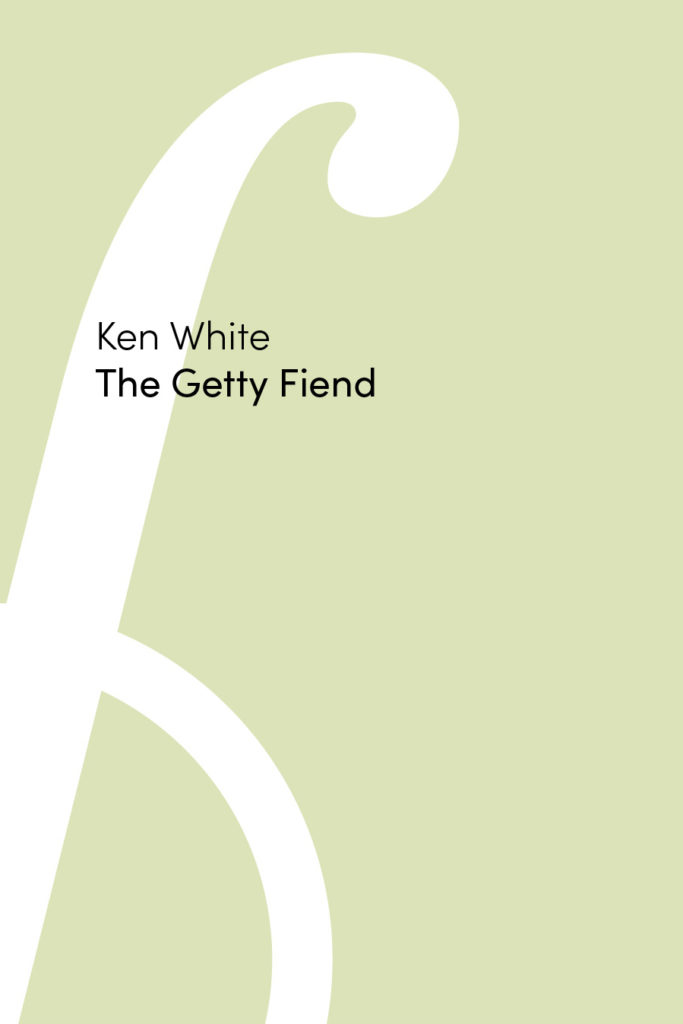Ken White speaks in swerve and thistle, thinks in hinges, muscles a touch of molasses into his syntax to flex the metronome. This is dazzle. These are necessary jostlings, tangled thick in coursing minutes, intercourses. Here, texture and reference are overlapped concerns, as artifice and blankness are both garmented and undressed: lovers, a beast, contemporary Los Angeles. We hunger for these racings — to be disguised, to be revealed, to jump leagues, to be in thrall.
~ Richard Siken, author of Crush and War of the Foxes
Ken White’s The Getty Fiend lives in its vast world of stunning lyric objectivity. The poems peril through strong characters, their chivalry of scope, breath, might, and myth, all to touch down in The J. Paul Getty Museum, and rejoice in a dream-vision of medieval modernism (“a SkyMall classic”). I always look to White’s poetry to close the gap between the ancient and the innovative; this is a mighty and brilliant second collection of poetry that holds its discontented marvel of grandeur at “kiss of air” distance, but bewitches with its arresting caress and craft.
~ Prageeta Sharma, author of Grief Sequence and Undergloom
The Getty Fiend’s poems squall with incomparable implication: necessary and livid éclat through our embalmèd darkness, “dialed to high.” Every spiral of beauty on earth is changed under such duress. And such close observation exceeds lexical and idiosyncratic gymnastics—this is no mere concordance of hips and thighs. If there is obscurity here, it is on the part of the reader. If our phantasms are condensed, we might thank Ken White for his cinematic mitigations.
~ Joan Naviyuk Kane, author of Dark Traffic, Ex Machina, and Milk Black Carbon
Like Jean Cocteau’s La Belle et La Bête, the alchemy of this dark romance is equal parts fabric, flesh, fur, and art direction. Ken White is the same sort of sorcerer of menace and allure, but The Getty Fiend is situated in contemporary Los Angeles, and in trailing the city’s specters—ecstasy, vengeance, and transformation—the poet takes surface streets. In language textured as distinctly as the dress of its heroes (belted, placketed, buckled, and triple-stitched), bare bodies too are fully accounted, philtrum to perineum. How far in does the docent escort lead? What’s behind this exhibit? Through these cretonne drapes? What Opera, Doc? Somewhere to surpass oneself. Wear this. Yes. You’re the one. We’ve waited for you.
~ Brian Blanchfield, author of Proxies and A Several World


